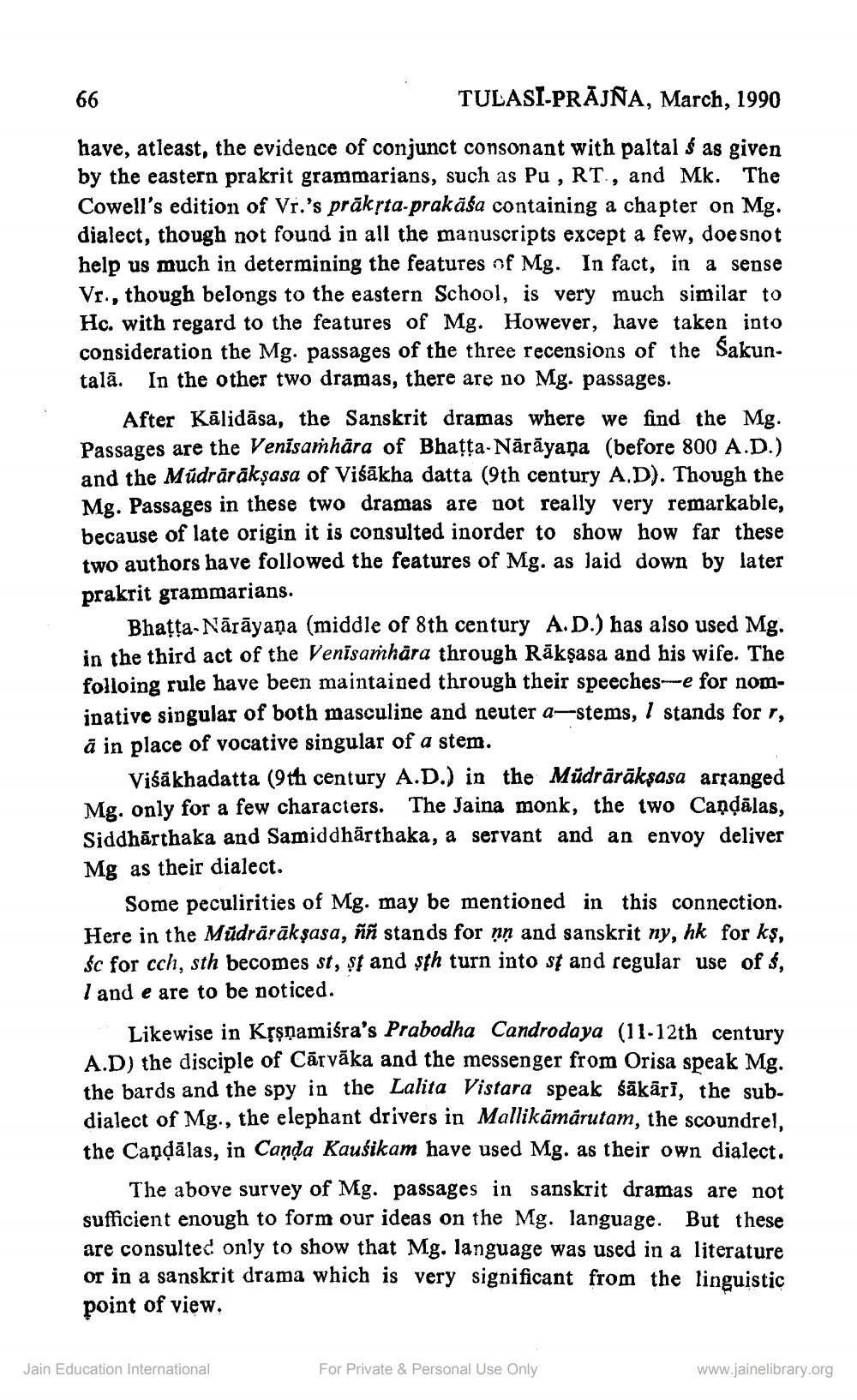________________
66
TULASI-PRĀJÑA, March, 1990
have, atleast, the evidence of conjunct consonant with paltal é as given by the eastern prakrit grammarians, such as Pu , RT., and Mk. The Cowell's edition of Vr.'s prāksta prakāśa containing a chapter on Mg. dialect, though not found in all the manuscripts except a few, doesnot help us much in determining the features of Mg. In fact, in a sense Vr., though belongs to the eastern School, is very much similar to Hc. with regard to the features of Mg. However, have taken into consideration the Mg. passages of the three recensions of the Sakuntalā. In the other two dramas, there are no Mg. passages.
After Kālidāsa, the Sanskrit dramas where we find the Mg. Passages are the Venisaṁhära of Bhațţa-Nārāyaṇa (before 800 A.D.) and the Müdrārākṣasa of Višākha datta (9th century A.D). Though the Mg. Passages in these two dramas are not really very remarkable, because of late origin it is consulted inorder to show how far these two authors have followed the features of Mg.as laid down by later prakrit grammarians.
Bhatta-Nārāyaṇa (middle of 8th century A.D.) has also used Mg. in the third act of the Denisamhära through Rākşasa and his wife. The folloing rule have been maintained through their speeches-e for nominative singular of both masculine and neuter a-stems, I stands for r, å in place of vocative singular of a stem.
Višākhadatta (9th century A.D.) in the Müdrārāksasa arranged Mg, only for a few characters. The Jaina monk, the two Candālas, Siddhārthaka and Samiddharthaka, a servant and an envoy deliver Mg as their dialect.
Some peculirities of Mg. may be mentioned in this connection. Here in the Müdrārākşasa, ññ stands for în and sanskrit ny, hk for kş, Śc for cch, sth becomes st, st and sth turn into st and regular use of $, I and e are to be noticed.
Likewise in Kțşņamiśra's Prabodha Candrodaya (11-12th century A.D) the disciple of Cārvāka and the messenger from Orisa speak Mg. the bards and the spy in the Lalita Vistara speak sākārī, the subdialect of Mg., the elephant drivers in Mallikāmărutam, the scoundrel, the Caņļālas, in Canda Kausikam have used Mg. as their own dialect.
The above survey of Mg. passages in sanskrit dramas are not sufficient enough to form our ideas on the Mg. language. But these are consulted only to show that Mg. language was used in a literature or in a sanskrit drama which is very significant from the linguistic point of view.
Jain Education International
For Private & Personal Use Only
www.jainelibrary.org




